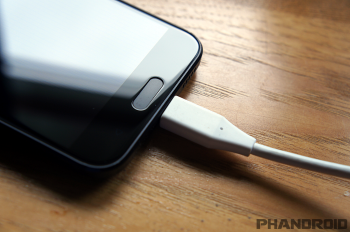
Google doesn’t want you to have Quick Charge on your next smartphone
With most flagship phones sporting batteries with 3,000 mAh or more, proprietary rapid charging technologies have allowed users to top off their smartphones surprisingly fast. Qualcomm’s Quick Charge 3.0 standard is fairly fast, but Huawei, Oppo, and other manufacturers have proprietary charging standards which can charge smartphone batteries even faster. With USB Type-C quickly becoming the dominant port standard for new devices, the new Android 7.0 CDD shows that Google doesn’t want manufacturer messing with the USB Type-C charging standard.
Type-C devices are STRONGLY RECOMMENDED to not support proprietary charging methods that modify Vbus voltage beyond default levels, or alter sink/source roles as such may result in interoperability issues with the chargers or devices that support the standard USB Power Delivery methods. While this is called out as “STRONGLY RECOMMENDED”, in future Android versions we might REQUIRE all type-C devices to support full interoperability with standard type-C chargers.
For now, Google isn’t prohibiting smartphone manufacturers from using Qualcomm’s Quick Charge or other proprietary charging technologies, but the last sentence is a bit ominous – warning that the recommendation may become a requirement in the future. The basic USB Type-C charging standard is a lot faster than what we’ve experienced with microUSB over the years, but it’s significantly slower than the rapid charging technologies that manufacturers have equipped their flagship phones with over the past year or two.
We understand that Google wants to level the playing field and remove any interoperability issues between devices and chargers. However, consumers and manufacturers shouldn’t be shackled by Google’s vision of universal interoperability.